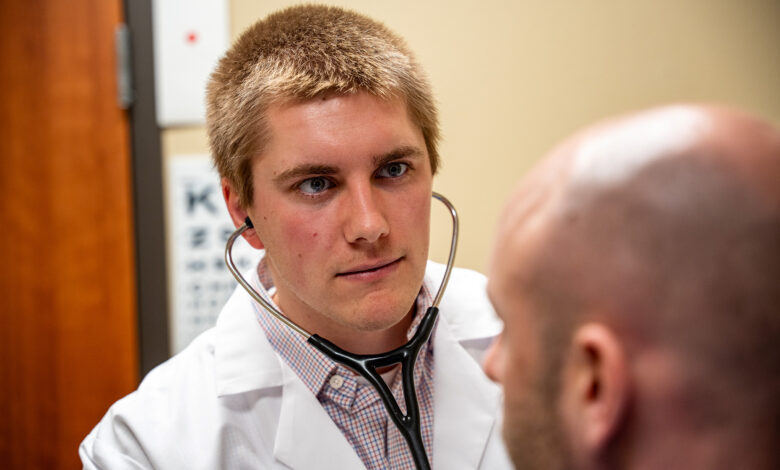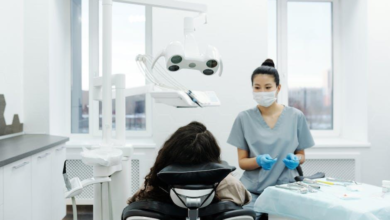Guarding Against Pneumonia: Proven Prevention Strategies

Pneumonia, a respiratory ailment marked by inflammation in the lungs, primarily impacts the alveoli, the small air sacs within the lungs. These air sacs often get filled with fluid or pus, resulting in symptoms such as cough, fever, chills, and breathing difficulties. The severity of pneumonia can vary greatly, ranging from mild to potentially fatal, and poses a higher risk for vulnerable groups like infants, young children, the elderly, and those with weakened immune systems or chronic health conditions. Given the substantial global impact of pneumonia, preventing this condition is of paramount importance in public health. Our extensive guide delves into a variety of effective pneumonia prevention strategies, including vaccinations, hygiene practices, ways to bolster the immune system, and lifestyle changes. For more detailed information and resources on pneumonia prevention, please visit this website ironhorse100kmclub.com
Understanding Pneumonia
To effectively prevent pneumonia, it is essential to understand its types, causes, risk factors, and how it impacts the lungs.
A. Types of Pneumonia
Pneumonia can be classified into different types based on its cause or the way it was acquired. The most common types include bacterial pneumonia, often caused by Streptococcus pneumoniae; viral pneumonia, frequently a result of influenza; and fungal pneumonia, which can occur in individuals with weakened immune systems.
B. Common Causes and Risk Factors
While pneumonia can affect anyone, certain factors increase the risk. These include age (infants and the elderly are at higher risk), smoking, chronic respiratory diseases like COPD, weakened or compromised immune systems, and being hospitalized, particularly in intensive care units.
C. How Pneumonia Affects the Lungs
When an individual has pneumonia, the alveoli in the lungs become inflamed and may fill with fluid or pus, which hampers the oxygen exchange process. This results in breathing difficulties and reduced oxygen supply to the body, which can lead to severe complications if not promptly and effectively treated.
Vaccination as a Key Prevention Tool
Vaccination is one of the most effective tools in the prevention of pneumonia.
A. Pneumococcal Vaccines
The pneumococcal vaccine protects against the most common bacterial cause of pneumonia, Streptococcus pneumoniae. Different types of pneumococcal vaccines are available and recommended for children, adults over 65, and individuals with certain health conditions.
B. Annual Flu Shots
As influenza can lead to viral pneumonia, annual flu vaccinations are crucial. Getting a flu shot reduces the risk of getting influenza, reducing the risk of secondary pneumonia.
C. Importance of Vaccination for High-Risk Groups
High-risk groups, including young children, older adults, and individuals with chronic health conditions or weakened immune systems, should prioritize getting vaccinated as they are more susceptible to pneumonia.
Hygiene Practices to Prevent Infection
Adopting proper hygiene practices can significantly reduce the risk of pneumonia by preventing the spread of infectious agents.
A. Hand Hygiene
Frequent and thorough hand washing with soap and water is one of the most effective ways to prevent spreading infections that can lead to pneumonia. Alcohol-based hand sanitizers can be used when soap and water are not available.
B. Respiratory Etiquette
Covering the mouth and nose with a tissue or the elbow when coughing or sneezing can prevent the spread of germs. Proper disposal of tissues and maintaining good hygiene practices are essential.
C. Regular Cleaning and Disinfection
Regularly cleaning and disinfecting surfaces frequently touched, such as doorknobs, light switches, and mobile devices, can help reduce the spread of germs that may cause pneumonia.
Strengthening Immune System
A robust immune system is vital in protecting the body from pneumonia.
A. Balanced Diet and Nutrition
A diet rich in fruits, vegetables, whole grains, lean proteins, and healthy fats can boost the immune system. Vitamins and minerals, particularly vitamins C and E, zinc, and selenium, are essential for immune function.
B. Regular Exercise
Regular physical activity can strengthen the immune system and improve overall health, reducing the risk of pneumonia. Even moderate exercise, such as brisk walking, can be beneficial.
C. Adequate Sleep and Stress Management
Getting quality sleep and managing stress effectively is essential for maintaining a robust immune system. Chronic stress and sleep deprivation can weaken the body’s defenses, making it more susceptible to infections like pneumonia.
Lifestyle Changes to Reduce Risk
Specific lifestyle changes can significantly reduce the risk of developing pneumonia.
A. Smoking Cessation
Smoking damages the respiratory system and impairs the body’s ability to fight off infections, including pneumonia. Quitting smoking can significantly reduce this risk.
B. Avoiding Exposure to Pollutants
Exposure to air pollutants, industrial fumes, and household chemicals can increase the risk of pneumonia. Reducing exposure to these pollutants, such as wearing masks and ensuring good ventilation, is essential for lung health.
C. Maintaining Healthy Indoor Air Quality
Improving indoor air quality can help prevent respiratory infections. This includes using air purifiers, maintaining humidity levels, and ensuring good ventilation in indoor spaces.
Managing Chronic Conditions
Individuals with chronic conditions such as asthma, COPD, or heart disease are at higher risk for pneumonia. Proper management of these conditions is crucial.
A. Importance of Controlling Chronic Diseases
Effectively managing chronic conditions can reduce the risk of pneumonia. This includes adhering to treatment plans, regular monitoring, and communicating with healthcare providers.
B. Regular Health Check-Ups
Regular check-ups can help manage chronic conditions and identify potential issues that may increase the risk of pneumonia. These check-ups are also an opportunity to discuss pneumonia prevention strategies.
C. Adherence to Treatment Plans
Following treatment plans for chronic conditions, including taking medications as prescribed and making necessary lifestyle changes, is crucial in reducing the risk of pneumonia.
Understanding Personal Health Risks
Individual assessment of health risks is essential for effective pneumonia prevention, especially for those in high-risk categories.
A. Assessing Individual Risk Factors
Personal health assessment involves evaluating individual risk factors such as age, lifestyle habits, existing chronic conditions, and environmental exposure. People with chronic lung diseases, smokers, and those living in areas with high pollution are at a higher risk and should take extra precautions.
B. Tailoring Prevention Strategies to Individual Needs
Prevention strategies should be tailored to individual health profiles. For instance, older adults may benefit more from certain types of vaccines. At the same time, individuals with conditions like diabetes might need to focus more on managing their primary disease to reduce their pneumonia risk.
C. Regular Consultations with Healthcare Providers
Regular consultations with healthcare providers help individuals understand and manage their specific risks. Healthcare professionals can advise on preventive measures, appropriate vaccinations, and ways to strengthen the immune system based on individual health conditions and risk factors.
Staying Informed About Pneumonia Care
In a world where medical advice and guidelines constantly evolve, staying informed is crucial for effective pneumonia prevention.
A. Keeping Up-to-Date with Vaccination Guidelines
Staying updated with the latest vaccination guidelines is vital. Guidelines can change, and new vaccines may become available. Keeping in touch with healthcare providers and following reliable health information sources is essential for receiving timely updates.
B. Awareness of New Treatment and Management Strategies
Advancements in medical research may lead to new treatment and management strategies for pneumonia. Awareness of these advancements can provide more options for prevention and treatment, especially for those at high risk.
C. Educating Oneself on Pneumonia and Respiratory Health
Educating oneself about pneumonia and general respiratory health can empower individuals to take proactive steps in prevention. This includes understanding how pneumonia affects the lungs, recognizing early symptoms, and knowing when to seek medical attention.
The Role of Public Health in Pneumonia Prevention
Public health initiatives significantly reduce the incidence of pneumonia through widespread education and vaccination programs.
A. Public Health Campaigns and Education
Public health campaigns to educate the public about pneumonia, its risks, prevention strategies, and the importance of vaccination can have a substantial impact. These campaigns can also dispel myths and provide accurate information about respiratory health.
B. Community-Based Pneumonia Prevention Programs
Community-based programs, especially in high-risk areas, can effectively prevent pneumonia. These programs include free or subsidized vaccination clinics, health education seminars, and distributing of materials on respiratory health maintenance.
C. Global Efforts to Reduce Pneumonia Risk
Globally, efforts to reduce pneumonia risk include:
- Improving access to healthcare
- Increasing vaccination coverage
- Addressing environmental factors such as air pollution and living conditions
International health organizations often collaborate with local governments to implement these strategies effectively.
Nutritional Considerations for Lung Health
Proper nutrition is vital in maintaining lung health and reducing pneumonia risk.
A. Foods That Boost Lung Function
A diet rich in fruits, vegetables, lean proteins, and whole grains can boost lung function. Antioxidant-rich foods, such as berries, nuts, and leafy greens, protect lung tissue from damage and inflammation.
B. Staying Hydrated for Respiratory Health
Adequate hydration is essential for maintaining mucosal linings in the lungs and can help keep airways clear. Drinking water, herbal teas, and other hydrating fluids can support respiratory health.
C. Avoiding Foods That Can Harm Lung Health
It’s advisable to avoid or limit foods that can harm lung health, such as those high in saturated fats, artificial additives, and excessive salt and sugar. These foods can increase inflammation and exacerbate respiratory issues.
Encouraging a Smoke-Free Environment
Creating a smoke-free environment is one of the most effective ways to prevent pneumonia, especially in children and non-smoking adults exposed to secondhand smoke.
A. The Dangers of Secondhand Smoke
Secondhand smoke exposure significantly increases the risk of respiratory infections like pneumonia. It’s essential to ensure that homes and public spaces are smoke-free to protect everyone, especially those most vulnerable.
B. Advocating for Smoke-Free Policies
Advocating for smoke-free policies in workplaces, public spaces, and housing can help reduce the risk of pneumonia and other respiratory diseases. These policies not only protect non-smokers but also encourage smokers to quit.
C. Providing Support for Smoking Cessation
Supporting smoking cessation efforts is crucial. This can include providing access to cessation programs, counseling, and nicotine replacement therapies. Encouraging and helping those trying to quit smoking can have a profound impact on reducing the risk of pneumonia and other smoking-related diseases.
Staying Active for Respiratory Health
Physical activity is beneficial for overall health and aids explicitly in maintaining lung health and preventing pneumonia.
A. Exercise and Lung Function
Regular exercise can improve lung capacity, strengthen respiratory muscles, and enhance immune function. Even moderate activities like brisk walking or cycling can significantly benefit lung health.
B. Tailored Exercise Programs for Those with Respiratory Conditions
For individuals with existing respiratory conditions, tailored exercise programs designed by healthcare professionals can help improve lung function without exacerbating their condition.
C. Encouraging Outdoor Activities in Clean Air Environments
Engaging in outdoor activities in areas with clean air can be particularly beneficial for lung health. Activities such as hiking, walking in parks, or beach outings can provide both exercise and exposure to cleaner air.
Conclusion
Preventing pneumonia is a multifaceted endeavor that involves understanding and managing individual health risks, staying informed about the latest pneumonia care, adopting a healthy lifestyle, and advocating for public health measures. By implementing these strategies, individuals can significantly reduce their risk of developing pneumonia and maintain solid respiratory health. It’s important to remember that these preventive measures protect against pneumonia and contribute to overall well-being and a healthier community.



